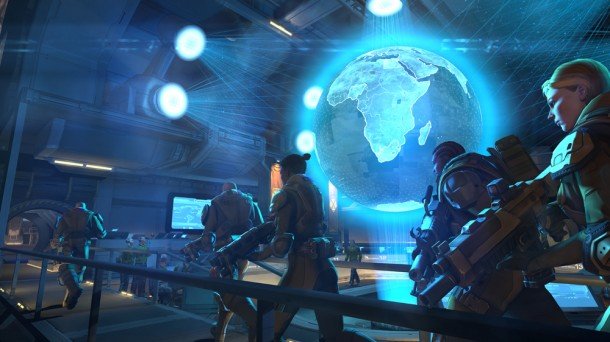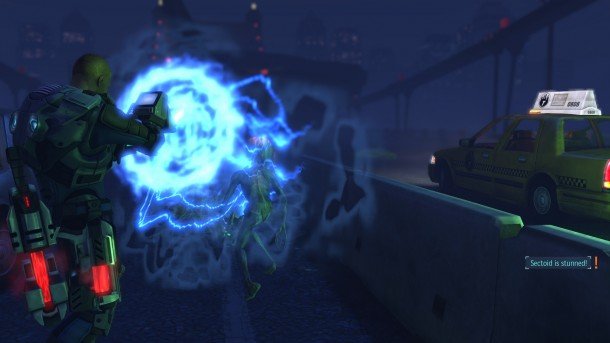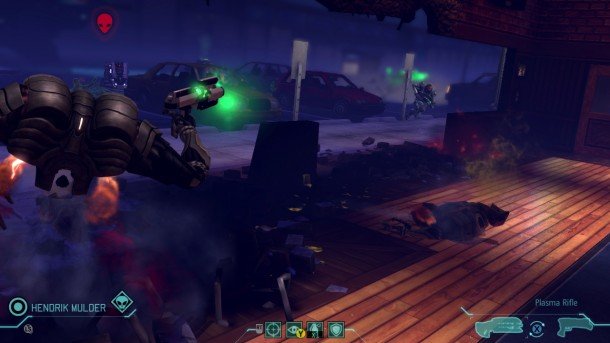XCOM: Enemy Unknown hands-on: classes and difficulty levels detailed

This article originally appeared in issue 243 of PC Gamer UK.
The internet has been quite clear about what kind of game an XCOM game should be. Ideally, it should be an unforgiving turnbased tactics game with global strategic scope in which you desperately flail to fend off alien aggressors and, through extensive research, eventually use their own weapons against them – or otherwise consign the entire Earth to death by ET. In other words, an XCOM game should be a bit like the original X-COM. Unlike 2K Marin's shooter reboot – which has recently scurried to a 2014 release – Firaxis's XCOM: Enemy Unknown is pitching itself as the game to resurrect the original X-COM. The unforgiving turn-based tactics, the global scope... it's all there.
But the gaming landscape has not only changed since the debut of the series in 1993, it has been thoroughly dug up and returfed. Even with Civilization devs Firaxis helming the process, will we see an authentic recreation that honours the series' notorious ruthlessness?
If my hands-on is anything to go by, then yes. Your first tutorial mission murders all but one of your soldiers. Then you're on your own, with a global extraterrestrial invasion happening in real time as you struggle to fund, grow and manage the secretive paramilitary organisation XCOM. Different nations clamour for XCOM's help throughout the game, and juggling them depends on which resources you covet, and how beleaguered each nation is. But let them stew for too long and things can start to go very wrong indeed – in fact, that's probably inevitable.
“You can't respond to every threat,” explains associate producer Pete Murray. “That's where the choice come in: what missions are you going to go in for? If the United States has a really high panic level but you really want the reward from another mission – that would be a tough choice. If panic gets too high then [the nation in question] drops out of the funding council for XCOM. XCOM has 16 nations on the funding council; if you lose eight of them, you lose the game.”

It's by no means the only way to fail. “There's a final mission, and if you don't succeed there things go badly,” Murray says. “But mostly losses come from not being able to stop the alien invasion in the first place. And that alien invasion happens on a timetable, so you're not just going to be able to ignore things.”
A terror alert in Beijing instigates my second foray into the field, deploying a trio of green recruits. They're joined by the traumatised survivor from the tutorial mission who specialises in heavy weapons. At first, things go well. With deft use of altitude, cover and flanking, my soldiers make quick work of a couple of Sectoids, the big-brained grey aliens of Roswell lore. Emboldened and quietly humming the Beastie Boys' Intergalactic, I move each unit up past the gory remains, pressing on into the unknown.
The biggest gaming news, reviews and hardware deals
Keep up to date with the most important stories and the best deals, as picked by the PC Gamer team.
As with the original game, the world is shrouded in darkness, only revealing itself and its horrors as you inch forward. But instead of portioning up an allotment of time units among your desired actions, you are now given a movement phase and an action phase to fill with the assortment of expected battlefield behaviours: shoot, reload, toss a grenade or set up overwatch. This last proves especially useful, allowing your soldier to interrupt the enemy's movement phase with a volley of fire, taking down any emerging threats before they can attack.
Alternatively, you can spend both phases to dash a little further: a blue boundary indicates your movement limit, with a yellow line beyond that showing the additional mileage you get if you forfeit an action. I opt to move slowly, however, sweeping the team forwards with the three noobs at the front, and my demolitions expert at the rear, skittering between crates and walls to find spots that offer cover from as many sides as possible. The aliens have their turn and one of my crew, set to overwatch, spots movement in the warehouse ahead and lets off a shot. It does little but graze one of the two Sectoids lurking inside the doorway, and they rattle off some laser fire in return, demolishing a cover position in the midground.

Since the demolitions expert hasn't moved yet, I decide to spend his two phases to ready and shoot his bazooka – one of the more time-consuming weapons. Targeting a Sectoid, I can see it has a 70 per cent chance of killing, and I'm told by my Firaxis chaperone that in all likelihood it will bring the building down, too. I like those odds. But the odds don't like me and my rocket spirals off-target, burying itself up the arse of an XCOM team member, who promptly expires. Luckily, a grenade from my guy on the left flank bounces through the doorway and does for our interstellar visitors. The mission is complete, and I am awarded a 'good' rating for my 25% casualty rate.
Pete Murray is rather apologetic for this turn of events – presumably some members of the press don't react well to blue-on-blue bloodshed. “Ah gawd,” he says, cringing as my guy receives a rocket-propelled friendly-fire enema. “Jake is going to kill me.”
But neither Pete, nor lead designer Jake Solomon, should worry – that you can, on only the second mission, murder your own crew on a single bad die roll is exactly what makes XCOM such a tense and enthralling experience. That brave soldier, whose name I never thought to learn, is dead and gone forever, along with whatever expertise he'd accrued and upgrades he'd received. The stakes are – and should be – that high. “There are lots of different ways you can die,” says Murray. “We really haven't cranked back on the fatality very much.”
He suggests that losing a quarter of your team in a given mission is a comparable bodycount to that of the original game. But, if anything, it's now more critical than ever, since the number of agents you can field is far fewer.

